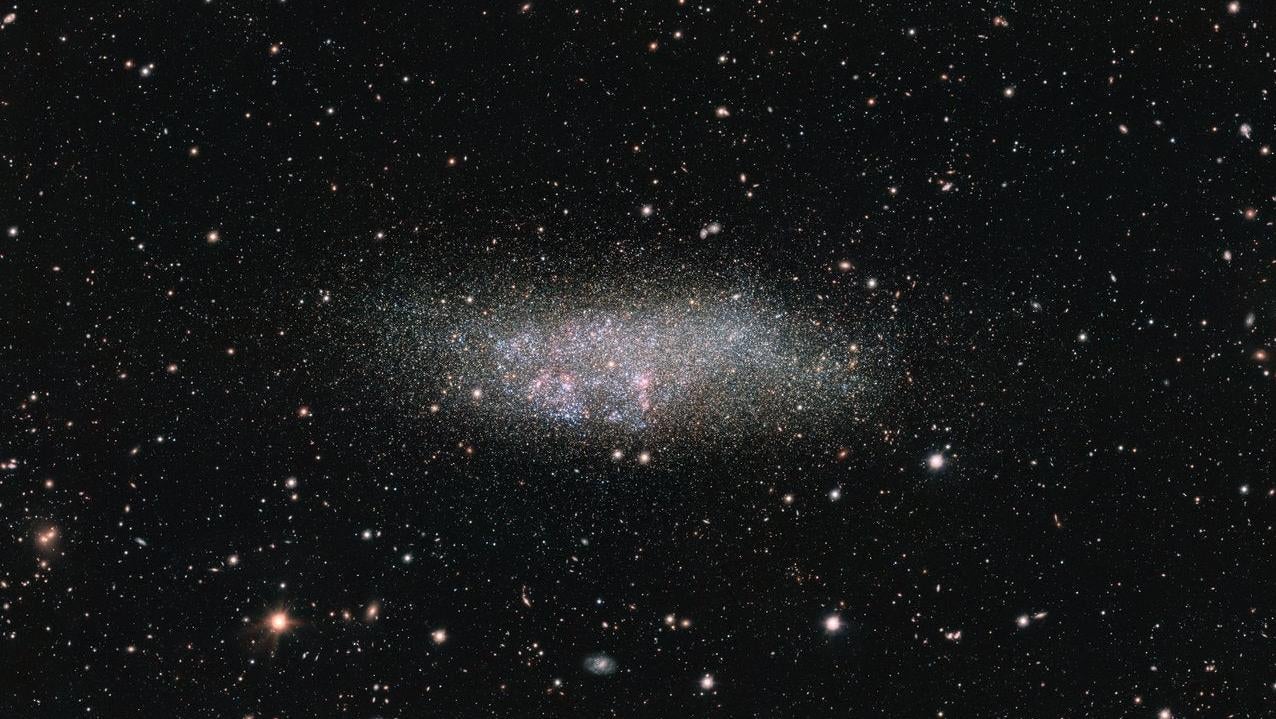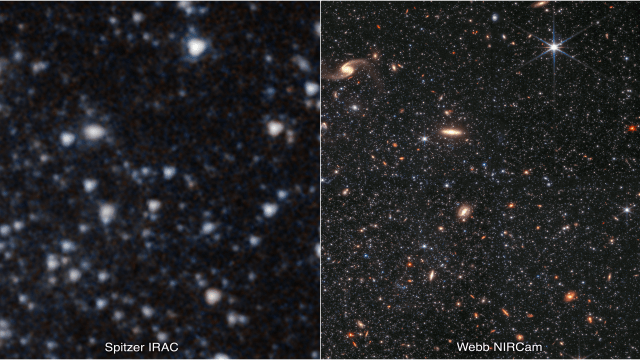Side-by-side shots of the the dwarf galaxy Wolf-Lundmark-Melotte, taken by NASA’s Spitzer Space Telescope and the Webb Space Telescope, reveal the impressive resolution offered by the newer telescope.
Wolf-Lundmark-Melotte is an isolated dwarf galaxy about 3 million light-years from the Milky Way and roughly 10 times smaller. Its galactic halo is about 8,000 light-years across and is thought to be fairly ancient. It was first discovered in October 1909, though it was only identified as a galaxy some 20 years later.
Now, Webb is helping us see the dwarf galaxy as never before. Next to the Spitzer telescope’s view of the galaxy, Webb’s ability to resolve very faint light sources is apparent.
Webb launched from French Guiana in December 2021 and travelled one million miles to its observation point in space. The telescope’s precise launch extended the mission’s expected longevity four-fold, meaning we could see the telescope operate through 2040. (The Hubble telescope was expected to operate for about 15 years when it launched in 1990; 32 years later, it’s still going strong, some glitches notwithstanding.)

Webb’s large mirror and state-of-the-art instrumentation means it can see fainter and more distant light than any space telescope before it. Among its research targets are exoplanets, objects within our solar system, and the universe’s earliest galaxies and stars. So far, the telescope’s science images have been spellbinding.
The newest image is no different. It shows countless light sources from a portion of the dwarf galaxy. The Webb image was taken by its Near-Infrared Camera (NIRCam) and includes light from four of the telescope’s filters; the Spitzer image includes light in two filters. You can also see the NIRCam image on its own here, complete with a dramatic zoom-in.
It is the second time a Webb image has been released next to an older image by Spitzer. The first was a comparison of the two observatories’ imagery of the Large Magellanic Cloud, taken by Webb’s MIRI instrument and Spitzer’s Infrared Array Camera. The same camera aboard Spitzer was used to capture the above image of the dwarf galaxy.
The Magellanic Cloud images were also not full-colour; Webb’s first full-colour images were released with much fanfare on July 12. Rather, the images of the cloud were an opportunity to show off Webb’s remarkable alignment.
You can check in with Webb using this handy Twitter bot that keeps tabs on what the telescope is observing in real time.
More: Webb Telescope Shows the Pillars of Creation Like You’ve Never Seen Them Before
